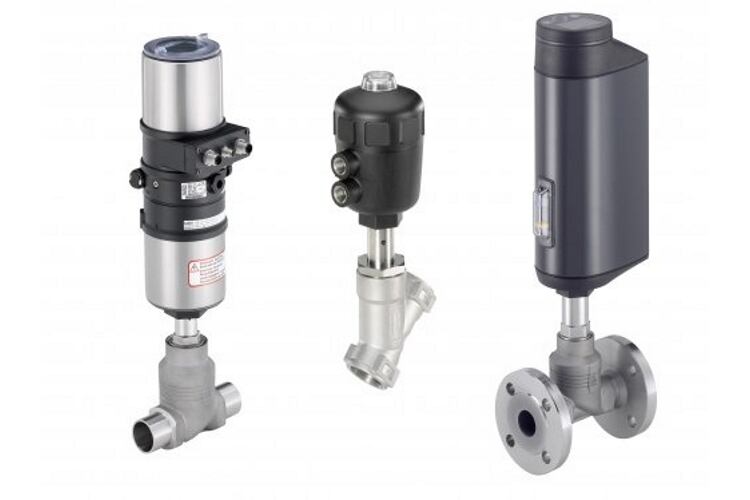Low-maintenance on/off and control valves are essential in the food and process industry. They control the flow of gases, steam or liquids, for example in auxiliary processes such as CIP (cleaning-in-place), reverse osmosis or temperature control.
Bürkert now offers a range of electric motor and pneumatically operated on/off and control valves suitable for these applications, with extended pressure and temperature ranges. Thanks to special sealing materials, the valves with stainless steel valve bodies work without any problems with media up to 25 bar gauge pressure and temperatures between -40°C and 230°C.
The rated service life at 200°C is more than 1m switching cycles. Devices and seals therefore only very rarely need to be replaced, which in turn increases system availability.
Sealing materials and lubricants suitable for foodstuffs, drinking water, fuel gases or oxygen allow the valves to be used with other media, for example for cleaning and flushing purposes, for heat carriers or saturated steam at 20 bar and 215°C. This means they can be used to switch and control all common gases and liquids for heating and cooling purposes in the specific process as well as in traditional CIP processes. It is also possible to use them with heat transfer oils e.g. in conjunction with alternative heating concepts.
The high-pressure and high-temperature valves are available in different versions with straight-seat on/off and control valves as well as with angle seat on/off and control variants. Depending on the version, the stainless-steel bodies offer flange, weld, thread or clamp connections in DNs from DN10 to 100 or NPS 3/8” to 4”.
Design details take into account the special requirements of the areas of application. Swivel plates, for example, increase seat tightness while optimized wipers extend the service life of the self-adjusting packing. Different plug and seat sets in metallic or soft-sealing variants allow an exact adaptation to the respective operating medium.
The on/off valves with media flow below the valve seat for water and other liquid media prevent pressure surges (water hammer). This reduces maintenance and replacement costs, especially when no service personnel are on site.

